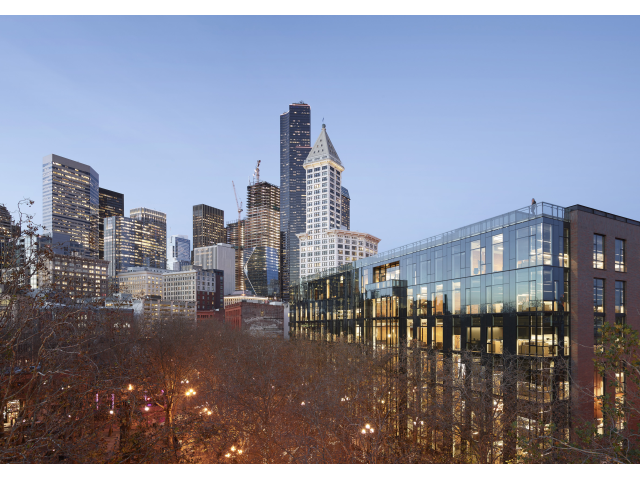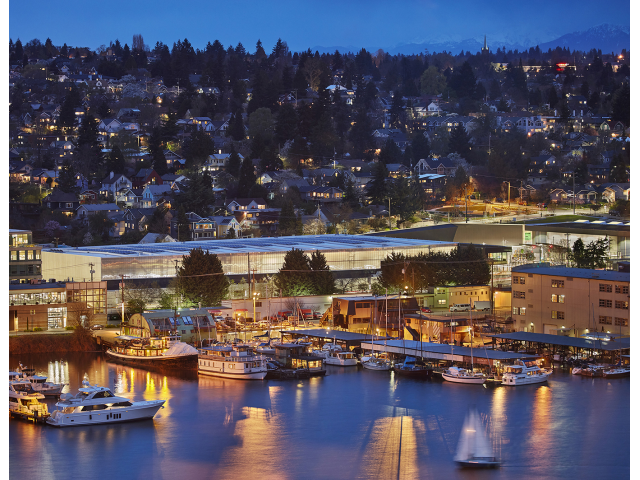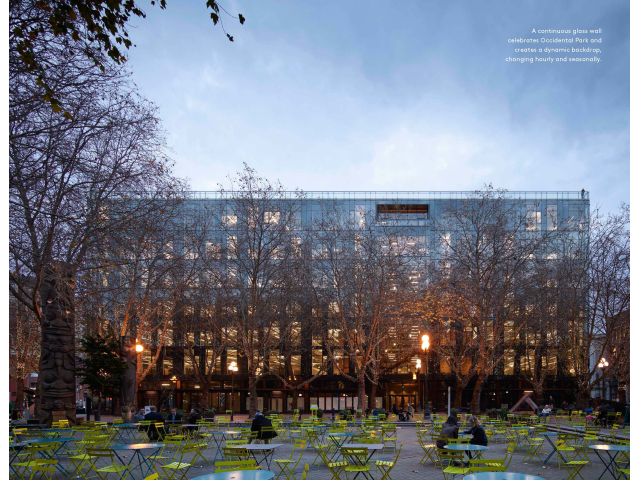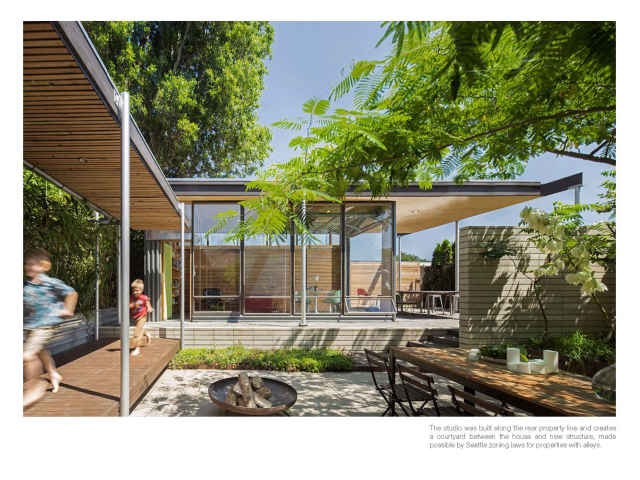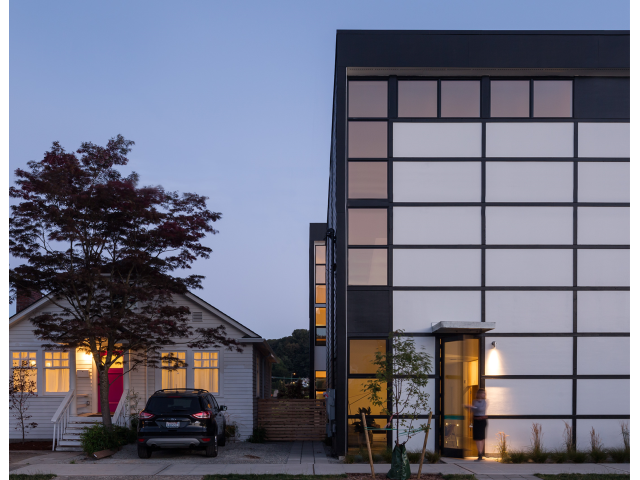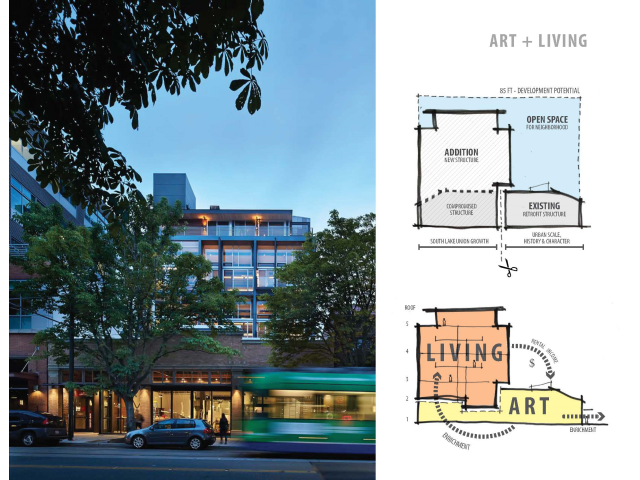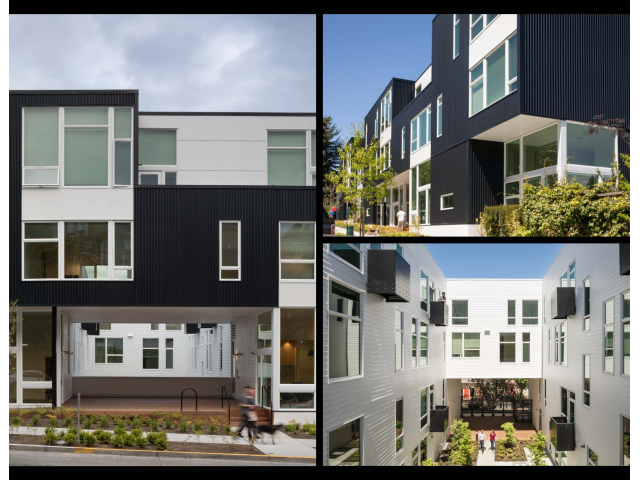“The quality and breadth of the submissions was truly impressive and demonstrated the level of commitment of architects in Washington state to address contemporary issues and challenges both local and global.”
-Shirley Blumberg, awards juror, partner KPMB
On November 13th, the American Institute of Architects (AIA) Seattle chapter hosted the 67th annual Honor Awards for Washington Architecture to celebrate excellence in design. A jury of out-of-town reviewers combed through numerous submissions, going on site visits to many of the projects, in order to select the best new buildings produced by Seattle architecture firms. Perhaps what was most interesting about the awards was not so much hearing the winners announced, but hearing what the jurors had to say about the state of design in Seattle. Interestingly, they had almost universally positive things to say about architecture in the city and its contribution to environmental sustainability and social justice. The one point at which I felt they were chastising us was when warning us to not get too comfortable and to keep pushing to do even better.
So what should readers of The Urbanist think about expensive buildings by fancy architects? As a person who cares about the city and its people, I find it impossible to not be interested in the physical form it takes—architecture and urbanism are two faces of the same coin. It is so easy in the world of urbanism to see the city only in the ones and zeros of transportation planning, zoning code and housing policy. It is easy to lose sight that the city should also be about beauty and surprise and feeling. Be it the joy of being in the crush of people amongst the old love worn labyrinth of Pike Place Market, the sense of unease created by the red floor in the Seattle Public Library, or the quiet escape to contemplation found in the chapel of St. Ignatius on the Seattle University campus. Great buildings make us feel things. Good architecture adds beauty and emotion to the city. Buildings define the space, they frame our lives, and set the mood of the street.
The city is the greatest and longest lasting cultural object that we as humans create. The collection of buildings and public spaces are part of our artistic heritage and legacy to the future just as much as a painting or a song. In addition, we build the spaces we inhabit and then those spaces shape who we are are. Alain de Botton, writing in the architecture of happiness says, “belief in the significance of architecture is premised on the notion that we are, for better or for worse, different people in different places—and on the conviction that it is architecture’s task to render vivid to us who we might ideally be.” With this in mind we should strive to make buildings, and thus a whole city, that will delight and inspire us.
“Honestly, you are setting the standard for the country”
-Robert Harris, Awards Juror, Partner, Lake|Flato
Now let us discuss the winners. Please note, the contest winners included out-of-town and state projects by Seattle-based firms, but I am only choosing to write about buildings in Seattle. I also covered a number of the winners in an earlier piece, so will not discuss those here. A complete list of winners can be seen at the end of this article or at the AIA website. The projects selected represent a broad range of scale and use. Ideally they will make us look around and ask why the buildings being built around us aren’t achieving the same level of quality and demand more.
Magnolia Residence by mw|works – Award of Honor
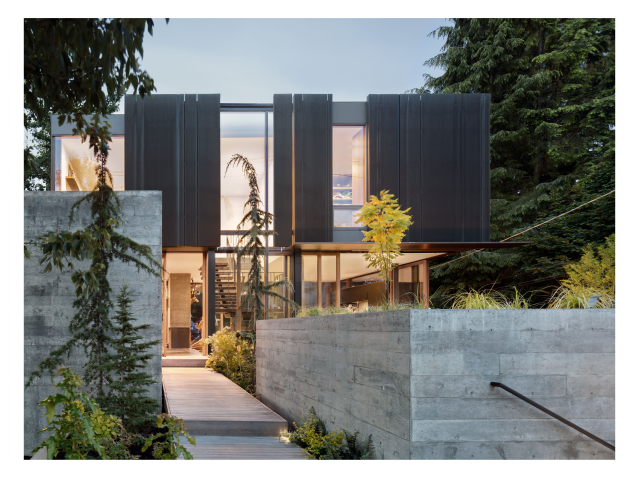 While this house is beautiful, I almost excluded it because it is a single-family detached residence. But in a city littered with boxy modernist townhouses and four-pack single-family houses, it is important to be reminded of how lovely a box can be when done well. Due to developer’s budgets and a city policy that discourages boxes from looking like boxes, quality detailing and materials are often replaced with a variety pack of different colors and textures of fiber cement and quiet simplicity with a carnival of modulations, eyebrows, eves, and balconies. While this is a house built for a person with a fabulous amount of money, with the same discipline and design rigor, a similar level of elegance could be achieved in the modernist townhouses, single-family houses, and apartments currently being built across the city for those with somewhat less money.
While this house is beautiful, I almost excluded it because it is a single-family detached residence. But in a city littered with boxy modernist townhouses and four-pack single-family houses, it is important to be reminded of how lovely a box can be when done well. Due to developer’s budgets and a city policy that discourages boxes from looking like boxes, quality detailing and materials are often replaced with a variety pack of different colors and textures of fiber cement and quiet simplicity with a carnival of modulations, eyebrows, eves, and balconies. While this is a house built for a person with a fabulous amount of money, with the same discipline and design rigor, a similar level of elegance could be achieved in the modernist townhouses, single-family houses, and apartments currently being built across the city for those with somewhat less money.
Renton Library by The Miller Hull Partnership – Award of Honor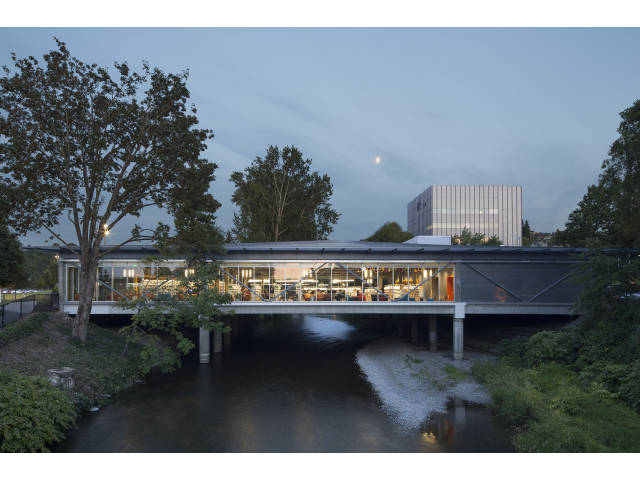
There is an interesting backstory to this project. When the local library system merged with the larger King County Library System, they decided to replace the original library that bridged the Cedar River with a more traditional land-based building. Citizens revolted and after a protracted fight the result is the library stayed right where it is and got a wonderful remodel. Miller Hull kept the original 1966 structural elements while opening up the space both to the outside with a new high performance exterior and inside by opening the interior to make it more usable. It is a humble building, with nothing too flashy to distracting from its serene setting. I visited it last year and stood just outside the entrance with several families and watched salmon swim up stream to spawn. A pretty magical experience to have while walking into a library in downtown Renton.
North Transfer Station by Mahlum Architects – Award of Merit
Much like the University of Washington’s West Utility Building, the North Transfer Station is a reminder that nothing is inherently beautiful or ugly. We as citizens decide that. A waste transfer station is where we haul garbage to begin its long journey from your house to its final resting place in Arlington, Oregon (for the 50% or so that does not get composted or recycled), so one would think it would be foul and smelly place to be confined to those parts of the city we like to ignore. Instead, its in a ruggedly beautiful building located in the heart of affluent north Seattle. The LEED Gold-certified facility also includes a solar array, green roof, and public park. The city decided that a utilitarian building would be a community icon and an asset—and so it was. It no doubt helped that the monied neighbors could afford lawyers and appeals, but we shouldn’t be forced to aspire to a high standard of design.
Weyerhaeuser Headquarters at 200 Occidental by Mithun – Award of Merit
Heralded as the ultimate sign of the back-to-the-city movement when the 115-year old Weyerhaeuser company chose to move from suburban Federal Way to this new building on Occidental park, this project is more that just a symbol. 200 Occidental helped to complete one of Seattle’s nicest public squares that for 50 years had been flanked by a parking lot. This building threads the needle by being both boldly modern and yet fitting into its historic context. The expanse of glass beautifully reflects the London Planes of the park (and provides daylighting for the LEED Platinum-certified offices), while its solid brick sides reflect its historic neighbors. This project is a wonderful addition to Seattle oldest neighborhood.
Grasshopper Courtyard Studio by Wittman Estes Architecture + Landscape – Honorable Mention
While not strictly a for rent accessory dwelling unit, this well crafted backyard studio shows how the thousands of backyards across the city can be turned into usable spaces for living, work and recreation. The Grasshopper studio is an example of courtyard urbanism. The addition of the multi-use studio frames a central courtyard and provides an addition space for work, short-term rental, and for use by visiting friends or relatives. The same form and craft could just as easily be applied to create additional housing that blends as seamlessly and beautifully into its site as this project.
King Street by JW Architects – Honorable Mention
King Street isn’t just architecture designed for architects. Contrary to what many may expect, people often go into architecture to do good: to design beautiful buildings that will be humane and sustainable, that will respect the past while working to represent the now and anticipate the future. This project was designed and developed by Julian Webber Architects (a firm mostly know for townhouses) to be their new office. The goal they set for themselves was to make their new home net-zero energy use and they achieved it—their building has created more energy in its first year than it consumed and has been certified as Net Zero by the Living Building Institute.
325 Westlake by Graham Baba Architects – Honorable Mention
To preserve or to tear down and build something new. This is the dilemma faced by many property owners. In some cases, a devil’s bargain is made and the facade is preserved with an entirely new building stuffed inside and spilling out the top. In the case of 325 Westlake, the bargain is rewritten to allow the old building to continue on with a new structure inserted at the rear of the site. The original 1927 heavy timber and masonry building was rehabilitated to house a new art space, while the structurally compromised rear of the building was removed and a new apartment building inserted in its place. Interestingly, the rent from the apartments helps to deffer the costs of the art space. This project is a great example of old and new thriving together.
Henry Apartments by PUBLIC47 Architects – Honorable Mention
Our city is experiencing massive growth of apartment buildings, and with good cause as the city is growing rapidly. The quality of these building from both a design and residential quality perspective varies considerably. The Henry distinguishes itself in that it has a simple massing and uses a limited material palette and a few bold moves to make a wonderful building that works as both a work of architecture as well as a place to live. The building is defined by two large courtyards that bring light and air into the inner apartments. The courtyard connects through the building to both the street and alley, opening up the building. There is a large array of outdoor spaces from simple balconies to the courtyard to an expansive rooftop deck. The provision of light and air and open space are important aspects of urban housing and will become even more important as we continue to densify as a city. While there are many valuable takeaways from this project, I think one of the most important is its use of relatively economical materials in a unfussy way to create an elegant and dignified building.
“Given the level of excellence there is real opportunity now for architects in the state of Washington to really move the needle, to not get too comfortable on ones own excellence and to take some risks.”
-Meejin Yoon, Award Juror, Head of the Department of Architecture at MIT
While many of us enjoy appreciating beautiful buildings for their own sake, we should not take these award winners as isolated objects for admiration or unachievable ideals. We should rather take these buildings as a question and a challenge. The question we should ask is why do so few new buildings achieve the this level of quality in design and craft? Why can’t our whole city be beautiful and thoughtful? What we build or let be built is part of our urban legacy that will last for many years after we are gone. Our challenge is to set a high standard and strive for buildings worthy of being maintained and cared for, buildings that make people feel all the feelings, buildings that make people happy at work and cozy at home, buildings that fill people with love for their neighborhood and their city.
All the Winners
AWARD OF HONOR
University of Washington West Campus Utility Plant by The Miller Hull Partnership
Magnolia Residence by mw|works
Renton Library by The Miller Hull Partnership
University of Idaho Integrated Research and Innovation Center (IRIC) by NBBJ
ENERGY IN DESIGN AWARD—Co-Awarded to:
Chatham University Eden Hall Campus by Mithun
University of Alaska Fairbanks, Wood Center Expansion by Perkins+Will
AWARD OF MERIT
North Transfer Station by Mahlum Architects
Wanapum Heritage Center by Mithun
University of Iowa Voxman Music Building by LMN Architects
University of California, Irvine Mesa Court Towers by Mithun
100 Stewart Hotel and Apartments by Olson Kundig
Weyerhaeuser Headquarters at 200 Occidental by Mithun
HONORABLE MENTION
Grasshopper Courtyard Studio by Wittman Estes Architecture + Landscape
King Street by JW Architects
325 Westlake by Graham Baba Architects
Henry Apartments by PUBLIC47 Architects
CONCEPTUAL
Seattle Mass Timber Tower by CallisonRTKL (Honorable Mention)
The Right Way by The Miller Hull Partnership (Honorable Mention)
To view all of the 2017 submissions, visit the Online Gallery.
Patrick grew up across the Puget Sound from Seattle and used to skip school to come hang out in the city. He is an designer at a small architecture firm with a strong focus on urban infill housing. He is passionate about design, housing affordability, biking, and what makes cities so magical. He works to advocate for abundant and diverse housing options and for a city that is a joy for people on bikes and foot. He and his family live in the Othello neighborhood.

